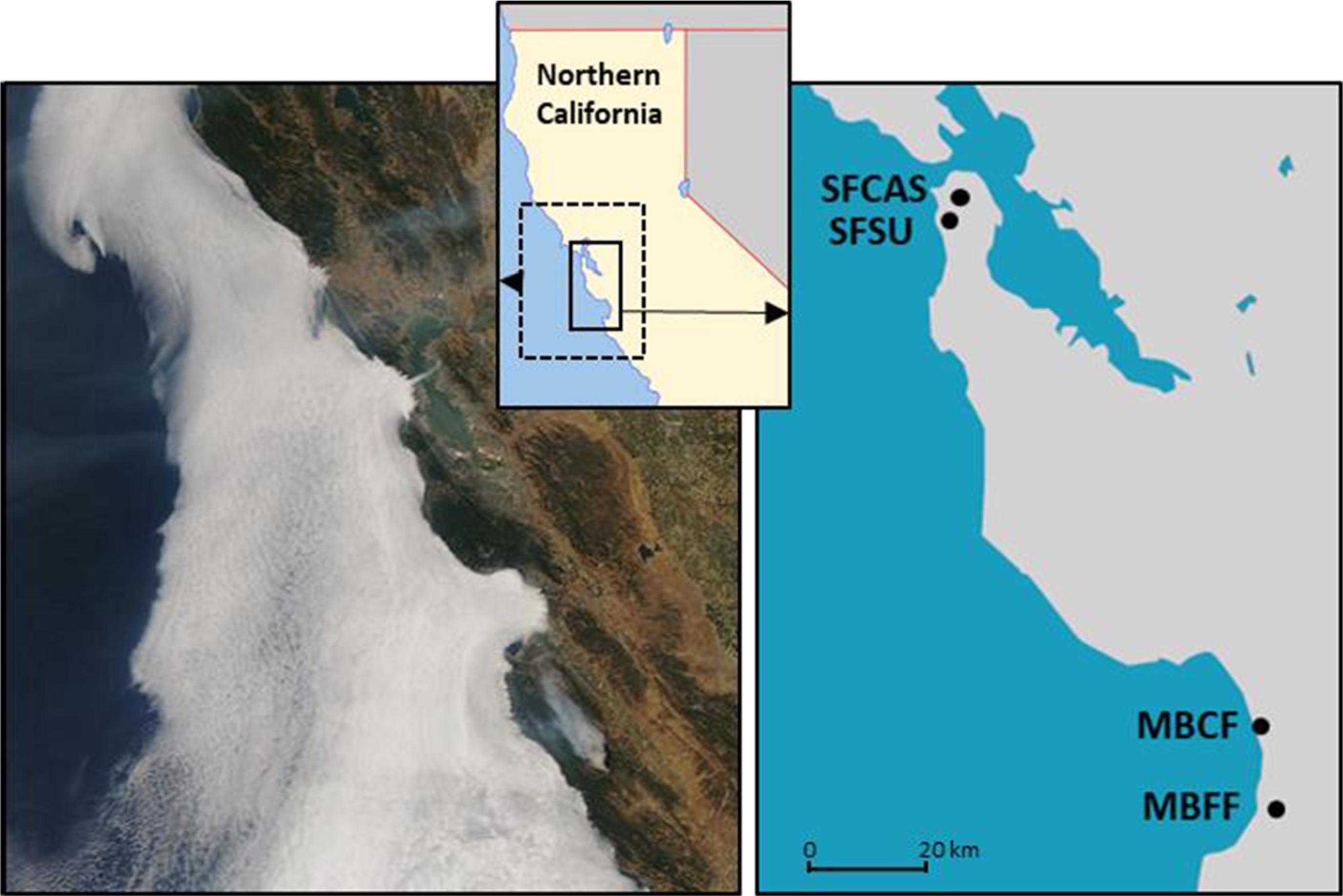Impacts of low cloud and fog on surface radiation fluxes for ecosystems in coastal California

Oliphant, A. J., Baguskas, S. A., & Fernandez, D. M. (2021). Impacts of low cloud and fog on surface radiation fluxes for ecosystems in coastal California. Theoretical and Applied Climatology, 144, 239–252. https://doi.org/10.1007/s00704-021-03518-y
Advection fog processes produce frequent low cloud and fog (LCF) during summer along the coast of central and northern California. Four radiometer datasets from sites in San Francisco and Monterey Bay as well as fog-drip and meteorological observations were used to characterize the role of LCF on surface radiation budget components and scattering of solar radiation. LCF produced distinct and consistent impacts on surface radiation relative to clear skies including large reductions (approximately half) in solar irradiance but large increases (approximately 180%) in the diffuse beam component, consistent increases of approximately 70 W m−2 in down-welling longwave radiation (L↓), as well as reductions in net radiation and leaf surface temperature by day and increases at night. L↓ can be a useful and accurate tool for monitoring the presence of LCF, using simple thresholds: LCF = L↓ > 360 W m−2 and clear-sky = L↓ < 340 W m−2. Based on this, LCF conditions prevailed 60% of hours during summer, peaking consistently at 08:00 PDT, with clear skies occurring 33% and mixed conditions 7% of hours. The ratio of the incident surface to extraterrestrial solar radiation (τ) is also useful to determine LCF presence during daylight hours, using LCF = τ < 0.0059β + 0.3 and clear-sky = τ > 0.0059β + 0.3, where β is the solar elevation angle. We also present a model to partition the diffuse and direct beam fractions of solar irradiance specifically for coastal LCF, which improved accuracy by more than 10% relative to existing universal models. These radiation characteristics are important for understanding energy balance and sunlight conditions experienced by coastal ecosystems.